|
http://bit.ly/29Vj66a
11 Valentine’s Day Email Campaign Ideas for 2019 http://bit.ly/2HGHxre February 14 is a joyful date for lovers and marketers. While couples celebrate their feelings with gifts and intimate dinners, companies double their email volume and rake in billions in sales. But when your competitors jump on the occasion and push sales, how can you stay afloat amid inbox clutter and set new records for email revenue? Best of all? You can use most of these tactics for other occasions, too.
1. Make a promise and DELIVER.Do you know one of the main reasons your customers don’t shop online before Valentine’s Day? It’s not because they don’t love your offers, or because they feel your inventory is overpriced. They fear being LATE with a perfect gift for their significant other! Can you imagine running home with a box of chocolates on February 15? I bet you wouldn’t get many “conversions”, not to mention the increased “hard bounce rate”. Make sure your Valentine’s Day newsletter makes a promise of timely delivery in:

Newsletter from Coach
2. Use wish lists and gift guides.Here’s a quick fact: your potential customers will visit only 1-3 retail sites before they purchase a Valentine’s Day gift. Takeaway? Remove shopping obstacles and drop a hint about the ideal gift for their partner. Your newsletter prevents visitors from wandering around on your website, and perhaps sailing away to a competitor’s e-store. Promote “wish list” ideas in your pre-Valentine’s Day emails, so subscribers can point their significant other to the right gift. You’ll reduce the number of returned items and become a trusted Valentine’s Day shopping advisor! Take a look at these 2019 Valentine’s Day emails:

V-DAY Gift Guide email from MVMT

Nordstrom’s Valentine’s Day gift guide email
3. Create irresistible subject lines.Like the holiday itself, your newsletter should be filled with love. Starting with your subject line, make it clear that your email is a special Valentine’s Day promo.
Here’s what to include in the subject line:
. Looking for inspiration? Check out these 5 great examples in major brands: «Last-Minute Luxuries For Your Valentine», Coach «Last day for free shipping on select Valentine’s Day gifts.» Harry & David « «V «Travel Deals Are Better When You Share it with Someone» Alaska Airlines «Love at first flight?» Ryanair «Be a matchmaker! And if you want to know more about the words you should use in your Valentine’s Day newsletter subject lines then check out this article – 18 Words to Skyrocket Your Email Open Rates.
4. Appeal to the right gender.Can you guess how much time subscribers devote to reading your email? Only 2-5 seconds. And if you don’t appeal to them with a relevant offer, your newsletter may get deleted, marked as spam, or simply abandoned. So use all the data you’ve gathered about your subscribers — and on Valentine’s Day, gender is the most important. Segment your email marketing list by males and females and create offers that appeal to each. Don’t waste their time by forcing them to browse irrelevant promos. They’re already busy enough with Valentine’s Day preparations. They need gifts — not for themselves, but for their significant other.

House of Fraser – Valentine’s Day email
But what if you don’t have this information? No worries! This is a perfect opportunity for a tactic called “behavioral targeting”. It reveals the gender of subscribers based on offers and elements they click in the newsletter. How to run the test? Design an email with call-to-action buttons:
Send an email to your entire mailing list. Then use the Search Contacts feature to check the history of clicks and find out who’s interested in each category. This is a fairly easy way to profile your subscribers and create segments for use in future campaigns.

Valentines Day Promo Offer from Real Madrid FC – for her and for him
5. Tell a story and sell a dream.Marketers often underestimate the power of email copywriting. Sure, fancy graphics highlight and sell your products. But the story is what can put your products in the right context and sell your subscribers the dream you offer.. A few sentences with a magical description of your Valentine’s Day promotion can have a bigger impact on sales than a discount or free shipping. You’re selling a trip for two? Why not call it “Taking Your Love Higher” and “Love at first flight”? Describe how your beloved will be spoilt with the getaway. This will create an irresistible image that encourages subscribers to click-thru to your website.

A Valentine’s Day email with an offer from Ryanair
Want to get people talking? Make up a hashtag and encourage people to share their special stories.

Twitter’s Valentine’s Day email
6. Find love everywhere.Valentine’s Day is not only about shopping for exclusive gifts for your SO. All the jewellery, watches, lingerie, and funny/cheesy gadgets… When your industry is not really “romantic”, you’ve got to get creative. As I mentioned before – the email’s copy is everything. First, you need to find out how your product, or offer, can be connected to the theme of love, couples, relationships, feelings, and dating. Then, use a fun play on words to give your subscribers a valentine’s-y, warm, and fuzzy feeling. Here are two emails with great Valentine’s Day copy. See how you can translate your regular copy into the language of love ? : 
A Valentine’s Day themed email from LIFX

A Valentine’s Day email from Benefit
7. Remind readers about gift cards.A spa session, dinner for two, or a new dress? Men have the same dilemma each year when given the mission of finding a perfect Valentine’s Day gift. Traditional gift cards, vouchers and e-gift cards can be a lifesaver for those who can’t figure out their partner’s preferences. According to Deloitte research, 43% of Americans purchase gift cards during holiday shopping. So why not promote them in your newsletters? This could be a perfect way to reach subscribers who prefer a “safe option” to a romantic Valentine’s Day surprise. Promote your (e)gift cards in the newsletter footer. This way, subscribers who scroll through the entire email and don’t find anything relevant will stumble upon a Valentine’s Day “life preserver” that could save the day on February 14!

A Valentine’s Day gift card offer from Victoria’s Secret.
8. It’s all about giving.Valentine’s Day is a unique time for giving gifts to those we care about and with whom we want to maintain great relationships. Doesn’t this sound like an ideal opportunity for customer-company connections? Use Valentine’s Day to show your customers you really CARE about them and want to make them feel special. There are many ways to achieve that with newsletters:
If you jump on the occasion and use one of these ideas, your subscribers will appreciate the Valentine’s Day aura your newsletter creates and may be more inclined to buy gifts from you.

REVOLVE’s newsletter for Valentine’s Day, offering free shipping & free returns
9. Design a one-of-a-kind email template.Not many holidays have such a well-defined visual identity as Valentine’s Day… well… except Christmas. The color schemes (red, shades of pink, white) and special symbols (roses, hearts, etc.) make Valentine’s Day newsletters stand out from your usual emails. Use a unique email template to leave no doubt that you’ve created a special Valentine’s Day promotion, and that your newsletter includes perfect gifts for their significant other. Tip: The GetResponse design team has created Valentine’s Day templates you can use for free! Just log in to your account and go to Email Creator.

Johnnie Boden email newsletter with a Valentine’s Day theme.

A special offer for Valentine’s Day from Taziki’s, with a romantic theme.
10. Think of different ways to celebrate.Just because it’s February 14, not everyone has to be in a romantic relationship. And that means many people celebrate Valentine’s Day without shopping for gifts and looking for a perfect candle-lit dinner recipe. Look at this email from Mouth that caters to people who had their heart broken right before Valentine’s Day. It uses fun copy and puns to make the hard times a bit sweeter. 
Valentine’s Day email from Mouth
Below, the email from House of Fraser suggests that either you love this day or hate it, it’s just an occasion to buy something for yourself. If you know your audience will enjoy it, you can target people who celebrate Galentine’s Day or Anti-Valentine’s Day, with friends or all by themselves.

House of Fraser’s Valentine’s Day email
11. Show some unconditional love.Among all these Valentine’s Day email tips and tricks you can use to spoil and convert your subscribers, there is one that can make your audience feel truly loved. It’s giving them something to enjoy, for free. And here, I don’t mean offering free shipping if they buy from you (like I advised to do in tip #8). I mean something a bit more personal, with no conditions and money involved. It can be an ebook, a recipe, DIY project instructions, a special playlist. Make your copy sound like a love letter, and make your customers fall for you.

PremiumBeat’s V-Day email with a romantic playlist

Martha Stewart’s Valentine’s Day newsletter with recipes and DIYs for Valentine’s Day
I hope we’ve inspired you to create a one-of-a-kind Valentine’s Day newsletter. If so, share your email designs in the comment section and let us know how they performed! And if you’re ready to create irresistible emails for your V-day campaign, then jump right in and use one of our 500+ free newsletter templates!
The post 11 Valentine’s Day Email Campaign Ideas for 2019 appeared first on GetResponse Blog - Online Marketing Tips. Printing via GetResponse Blog – Online Marketing Tips http://bit.ly/1Qs2QKR January 31, 2019 at 11:55AM
0 Comments
http://bit.ly/2WxPYZm
Freya Moses http://bit.ly/2RsXSzJ Freya Moses is an illustrator, designer and maker currently working as a Senior technician specialising in printed textiles at Falmouth University. She is also studying an MA in Illustration with a focus on creating colourful, fun and engaging images through the exploration and modification of analogue processes. Freya’s creativity was sparked as a result of a family adventure back when she was five years old when her parents sold their family home in Lewes to travel Europe and America. After visiting landmarks such as Sagrada Familia and the Statue of Liberty she would obsessively recreate them using pens, pencils, paint and anything else she could get her hands on.
Want to join our membership community? APPLY HERE Printing via People of Print http://bit.ly/2DhgcW7 January 31, 2019 at 11:03AM
http://bit.ly/2RtquJ4
Lizz Dunn http://bit.ly/2Ws33DH New People of Print Member Lizz Dunn is a Liverpool based Designer and a recent graduate from the Liverpool School of Art and Design with a BaHons in Graphic Design and Illustration. Dunn decided to continue her studies in Graphic Design and Illustration and is currently working towards a Masters Degree.
You can apply to become an official member here. Printing via People of Print http://bit.ly/2DhgcW7 January 31, 2019 at 10:13AM
http://bit.ly/2WtZ8WS
Circling: Constantin Malmare http://bit.ly/2Rr1bal Working in video, installation, drawing, painting, print, collage and sculpture, Constantin Malmare examines new ground in optics and creates artworks that ride the line between playfulness and existential concerns.
Deeply interested in colour relationships, aesthetics, and perception, his influences include from Carlos Cruz Diez’s bedazzling compositions to Tauba Auerbach’s deeply intellectually filled artworks.
Malmare states: “In my practice I follow lines and I am interested in how we read them. I am always interested to see my concepts materialized and when I see them, I immediately form new ideas, constantly forming new threads. I believe my art should move you either emotionally or intellectually.”
Interested in becoming a member? Apply here. Printing via People of Print http://bit.ly/2DhgcW7 January 31, 2019 at 09:31AM The USS Harry S. Truman: Metal 3D Printing to Play a Role in Designing Navy Warships http://bit.ly/2Ga0Pmu
3D printing can quickly prove to be indispensable, however, allowing countless items to be repaired without waiting long periods of time. This is true also for other divisions of the U.S. Military that may be able to create spare parts in extremely remote/rural areas—or they may even create objects that were not previously possible! While 3D printing may have been occurring on ships for years already, constructing these vessels by such means is a much bigger step. Recently though, Huntington Ingalls Industries (Newport News Shipbuilding division) made history as they used parts created through AM in both the design and production of nuclear-powered warships. Like so many other industrial companies and organizations, they have delved into the use of metal in 3D printing as it offers the potential for incredible strength and durability in parts. This first metal 3D printed part has been delivered to the designated aircraft carrier, presented in a formal ceremony to Rear Adm. Lorin Selby. Acting as the Naval Sea Systems Command’s chief engineer and deputy commander for ship design, integration, and naval engineering, Selby accepted the 3D printed piping assembly part, to be installed on the Harry S. Truman. It will be assessed for quality and functionality over the next year. 
Don Hamadyk, Newport News Shipbuilding’s director of research and development, presented the first 3D printed metal part to Rear Adm. Lorin Selby, Naval Sea Systems Command’s chief engineer and deputy commander for ship design, integration, and naval engineering during a brief ceremony on USS Harry S. Truman (CVN 75). Photo by Matt Hildreth/HII.
NAVSEA has recently given the green light, approving 3D printing technical standards—but that has not been a quick and easy process by any means. Gaining approval has involved intense collaborations, along with partnering with other industrial organizations. An engineered test program was completed, and results regarding 3D printing of Navy parts have been published. 
The prototype piping assembly will be installed on the aircraft carrier USS Harry S. Truman (CVN 75). Photo by John Whalen/HII. Interested in finding out more about 3D printing and the Navy? Check out some of our other news stories regarding the Harry S. Truman. This ship (along with a miniature 3D printing lab installed on the amphibious assault ship USS Kearsarge) has been the site of an experimental Fab Lab that allowed the first 3D printed parts to be created at sea, with sailors innovating depending on need, especially in the area of tools—to include a 3D printed radio clasp that cost only six cents to manufacture. These types of endeavors, many of which have been taken on by the military, are indicative of the universal benefits offered by 3D printing: affordability, speed in production, and the ability to manufacture in low volume without having to bring in a middleman. What do you think of this news? Let us know your thoughts! Join the discussion of this and other 3D printing topics at 3DPrintBoard.com. [Source: MarineLink] Printing via 3DPrint.com | The Voice of 3D Printing / Additive Manufacturing https://3dprint.com January 31, 2019 at 02:03AM AMS 2019 Day 2: Medical 3D Printing Keynote by HPs Head of Healthcare and Life Sciences Strategy1/31/2019 AMS 2019 Day 2: Medical 3D Printing Keynote by HP’s Head of Healthcare and Life Sciences Strategy http://bit.ly/2MIdj6e Our second annual Additive Manufacturing Strategies summit, held in Boston and co-hosted by SmarTech Markets Publishing, is in full swing after Tuesday’s two featured workshops. This year’s AMS event, “The Future of 3D Printing in Medicine and Dentistry,” now includes a track each for medical and dental 3D printing, along with a startup competition, an exhibition floor with 12 booths, and even more speakers.
Dr. Tinazli has been leading HP’s corporate-wide, global strategy for Healthcare and Life Sciences since 2015, and though he referred to himself as a “3D print novice,” spoke today about “3D Printing Going Mainstream for Health 4.0,” with the main theme centered around the democratization of medicine and the implications. He is currently working on a healthcare testing ecosystem made up of mobile diagnostics and small microfluidic parts, and, as a self-proclaimed fan of technology convergence, noted with admiration that an event such as AMS would not have been possible even a few years ago. After giving a brief history of HP, which celebrates its 80th anniversary this year, and how it is “using technology to make a better future for everyone,” Dr. Tinazli explained why 3D printing excites him; the reasons include the fact that 3D printing is connecting HP’s core technology, can be used to customize products, and is also “the catalyst for the fourth industrial revolution” by enabling faster innovation. He noted that democratization is helping to make technologies, such as 3D printing, available to everyone.
He noted that some specific megatrends (slow-changing, transformative, global trends), such as decentralized healthcare and an aging population, are indicating a transformation in life sciences, which, when paired with 3D printing, could create some major opportunities for disruption in healthcare. 3D printing is reinventing industries and “making the leap to factory production,” and Dr. Tinazli noted some of the economic justifications for adopting the technology, such as:
He noted four classes of mainstream healthcare applications – orthodontics, dental prosthetics, hearing aids, and orthopedics – that see a combined 400,000 custom medical devices 3D printed per day…an impressive number, indeed. Dr. Tinazli moved on to discuss some of the many innovative companies using 3D printing for medical applications, starting with the startup Smile Direct Club, which either delivers an impression kit directly to a customer’s home or has one of its remote SmileShops scan the teeth in order to fabricate custom dental aligners. Dr. Tinazli noted that dental is in an “interesting growth phase,” and also mentioned nivellipso, a Swiss company that uses HP’s MJF technology to 3D print dental molds. One of Dr. Tinazli’s favorite examples is the custom earbud manufacturing solution that Formlabs debuted at CES 2018. He noted that the earbuds are made with the same technology and workflow as custom 3D printed hearing aids are, which is an excellent example of 3D printing solutions in the clinical world being applied to consumer products.
This was the perfect segue to the 3D printed UNYQ Align scoliosis brace, which is far more pleasant for teenage patients to wear for 24 hours than the traditional braces, which are typically heavy and far too hot.
Another example he brought up was HP’s FitStation platform, which is using 3D printing to deliver individualized, custom-fitting footwear and orthotics.
The talk then moved on to point-of-care (POC) 3D printing, and how the use of 3D printed anatomical models before surgery can decrease the length of the operation, which in turn saves on cost and improves the patient’s experience and surgical outcome. This is where full-color 3D printing, which Dr. Tinazli called “a strong domain of HP,” can be very helpful.
Using the Jet Fusion 4210 3D printer, Dr. Tinazli said that it will only cost $700-800 for an entire build of 322 sunglass parts, which makes it possible to sell them “at a profit.” In addition, the MJF 300/500 3D printer series is able to make sunglasses that have custom designs, like Minecraft-themed, and can even include QR codes to help lower the risk of counterfeiting. Finally, Dr. Tinazli mentioned HP’s “latest baby: Metal Jet Fusion,” which was introduced in late 2018 and allows companies to “dive instantly into mass production.” Additionally, it can also be used for medical applications, such as 3D printing surgical devices and tools. Then came the question and answer portion of the keynote. Someone asked what industries will be most immediately impacted by HP’s Metal Jet Fusion; Dr. Tinazli replied that HP is going after professional users in high value mass markets, like automotive and medical. Another attendee asked about specific patient populations being looked at by HP.
He expounded on this answer further during the next question, when a facial surgeon in the audience asked about the entire workflow of 3D printing in healthcare, in terms of training technicians and physicians to use the equipment to fabricate customized models, and if HP was doing anything to address the full spectrum of care, rather than just providing the 3D printer itself.
We’ll have more to share with you from AMS 2019, so stay tuned! Discuss this and other 3D printing topics at 3DPrintBoard.com or share your thoughts below. [Images: Sarah Saunders unless otherwise noted] Printing via 3DPrint.com | The Voice of 3D Printing / Additive Manufacturing https://3dprint.com January 31, 2019 at 01:33AM Allevi Releases A Coaxial Extrusion Kit for Bioprinting http://bit.ly/2Tnl8Rr
Bioprinter company Allevi was launched in 2014. The firm now has a family of bioprinters ranging from the simple Allevi one to the 6 temperature controlled print head Allevi 6. This printer also has photocuring on board, a reported sub-micron precision and auto calibration. Allevi also sells bioinks but lets you put any material in the printer that you wish. The company has materials such as gelatin methacrylate, alginate, PEGDA, collagen, pluronics and silk available. What we didn’t sufficiently appreciate is that the firm also has what it calls ink kits. These are kits such as a FRESH kit which will let you begin with the FRESH hydrogel printing method and also a conductive tissue kit so you can explore this. By offering these types of kits the Allevi team is adding value to their installed base and extending their use of the printer. This kind of a play was almost completely absent in the desktop 3D printing space and a lot of firms let a lot of money on the table there. In desktop FDM people left spare parts and aftermarket upgrades to companies such as E3D online which have made a pretty penny (and lots of ugly ones too) from upgrading the nozzle and other components. By offering kits directly Allevi is binding customers to them, getting more revenue and building a stronger relationship with them. Furthermore, they’re also inhibiting other people from entering their market via the aftermarket or losing money to teams of researchers hacking their own nozzles and things.
Allevi’s newest kit is a coaxial extrusion kit. VIDEO The company explained the need for coaxial extrusion through citing papers that used coaxial:
When we reached out to them co-founder and CEO Ricky Solorzano explained to us that,
We think that expanding your market and expanding the functionality of your systems in such a way is a very astute move indeed. By focusing on researchers needs in achieving vascularization Allevi is helping them surmount the main barrier currently holding back bioprinting. We’d welcome more aftermarket vendors for desktop 3D printers that would improve, upgrade and bring new functionalities to the million 3D printers out there.
Printing via 3DPrint.com | The Voice of 3D Printing / Additive Manufacturing https://3dprint.com January 31, 2019 at 01:15AM Solvay Adds PEEK and PPSU 3D Printing Materials to Digimat http://bit.ly/2WxgemB Solvay has just added its 10% carbon fiber filled KetaSpire PEEK and Radel polyphenylsulfone (PPSU) materials to Digimat Additive Manufacturing. Digimat is a software package made by e-Xstream engineering that lets users simulate materials and their real-world performance. Digimat lets materials scientists select and simulate materials that they can model. The Digimat Process Simulation tool lets you anticipate and simulate part warpage, distortion or built up stress in 3D printed parts. One can look at the thermomechanical performance of a material or how it performs under load. Digimat gives companies that make parts with 3D printing the confidence to assess the real world performance of those parts while simultaneously giving polymer companies the ability to “mix” good new materials.
By adding their two materials to Digimat Solvay is signaling that they intend to use these materials for manufacturing and wants to enable customers in that field. It is like a comforter blanket that will make engineers feel secure enough that the part can actually go on the car or plane. It seems that competition in high-performance polymers is heating up. Solvay’s PPSU material is autoclavable material with temperature resistance above a 180 C that was previously already on offer in several firms. Superior steam and chemical resistance make PPSU the material of choice for a high number of high-performance applications ranging from medical to industrial pipes and things like valves. PPSU is kind of a Bob the Builder kind of material it is not like super wow or anything but it gets the job done. It has broad applicability in many industries and will help people fill niches and expand applications for 3D printing. Printability is high and it is a comparatively easy material to work with.
This in contrast to the Prima Donna of 3D Printing materials PEEK. PEEK is a very high-performance material of the PAEK family. This material has very high abrasion, chemical, and heat resistance. PEEK’s strength to weight and continuous service temperature are some of the highest in Fused Deposition Modeling. One needs a 380 C or more nozzle temperature to extrude PEEK and the material is a straight up nightmare to print. PEEK was already on the market through firms such as 3D4Makers, 3Dxtech, Roboze, and others. Solvay has chosen not to focus on an unfilled grade pf PEEK but instead a 10% Carbon Fiber KetaSpire PEEK. This is probably in response to everyone’s higher strength and stiffness wishes. I’m not a fan of filled materials because at the end of the day recycling is going to be troublesome if not impossible. Carbon Fiber PEEK is however what now the aerospace guys are daydreaming about so its a logical choice for the firm. 
The firm also offers volume discounts. It is notable that Solvay sells its filaments directly through its own online shop. Other polymer companies have gone exclusively through channel or focus on channel as a part of their distribution strategy. Ideally, this does let Solvay obtain more margin and more contact with the market. At such an early stage of their market entry, this would be a smart choice keeping them close to a fast-moving market and the applications that will bring in volume for them. In the long run for different markets and areas resellers may very well be a better proposition. I must confess that I’d never even heard of Digimat before DSM released a filled material on Digimat at Formnext. Great stuff for Digimat to have these polymer companies do their marketing for them. Christophe Schramm, Additive Manufacturing business manager said that,
On the whole, these are the two perfect materials in the Solvay portfolio to lavish extra attention on and we can’t wait to see what other firms do in response.
Printing via 3DPrint.com | The Voice of 3D Printing / Additive Manufacturing https://3dprint.com January 31, 2019 at 12:06AM
http://bit.ly/2Sh5vh1
Sleep Sparrow http://bit.ly/2HGhpgr Sleep Sparrow’s (Sophie Chadwick) psychedelic creations reference brutalist architecture, colour therapy and the experience of listening to music. Utilising a traditional cut and paste technique that requires a delicate hand and a scalpel, she weaves textured collages which play with perspective. An archive of vintage photographs – women in beehives, kitsch pottery and dreary city scenes – are transformed by meandering lines and contrasting blocks of colour.
Printing via People of Print http://bit.ly/2DhgcW7 January 30, 2019 at 11:33AM Google, Stratasys and CyArk Use 3D Scanning and 3D Printing to Preserve Cultural Heritage http://bit.ly/2Uv6S9o Google Arts and Culture is collaborating with Stratasys and non-profit CyArk to preserve 3D scans and 3D prints of some of the world’s most cherished heritage sites. Google’s Open Heritage Project lets you virtually explore sites from all over the world through a fun and immersive experience. Myanmar’s Bagan, the Brandenburger Tor in Berlin, Chichén Itzá you can be an armchair explorer in each of them. Test it out by flying through some of the sites here. 
Wat Yai Chai Mongkhon Temple Thailand. What’s more, the files are available for download so that teachers in classrooms or museums worldwide can show them off. Kinesthetic learners, the curious and the idle can use them to play with and touch some of the world’s most notable sites. The parts have been crafted for the J750 3D printer which can do multi-color and multi-materials. The company says that,

An impression of Stela E of the Mayan Quirigua site in Guatemala taken by Alfred Maudslay Alfred Maudslay went to Quirigua in 1881 and was enthralled by the Mayan civilization and the remote Quirigua site. In total, he would undertake six Mayan expeditions. Above in the image, we can see an impression of Stela E of the Quirigua site. Over ten meters tall it was erected on the 22nd of January in 771 AD. From then on it let all passers-by know that the ruler K’ak’ Tiliw Chan Yopaat ruled here.
In the 1880s archeology, especially of a remote foreign site was far more Grand Theft Auto than it is today. At the time Mayan culture was little understood in the West and Mandalay’s exploration of the site, excavation and impressions were instrumental in our understanding Mayan language and culture. Mayan stelae can be found throughout Mayan lands sometimes standing ten meters or more these objects are thought to tell histories and reinforce Mayan rule. Celebrating kings and commemorating events these stelae gave real insight into the politics of Mayan life. The important Quirigua site also held squat zoomorphs or animal inspired shapes that show gods in the Mayan world. By taking their impressions and cataloging them in his tome; an impression of the site was transported around the world to be studied. Stratasys, Google, and CyArk are now doing a very similar much more high tech thing with 3D scanning and 3D printing. In Maudlays footprints they are finding a way to let us all study impressions of an unfathomable past. Bryan Allen, a Design Technologist at Google, said:
Rafie Grinvald, Enterprise Product Director of Rapid Prototyping, Stratasys “Combining rich colors and translucency in a single print, designers and engineers can build models with heightened levels of accuracy and realism – mirroring opaque or transparent structures, and even complex materials like rubber,” CyArk has already done some amazing work worldwide in 3D scanning many of the world’s most well-known objects. Will more 3D scans mean that one could at one point download a museum? In the past, we’ve written about 3D Printing being used to let the visually impaired feel exhibits, and how exhibits could be touched by everyone, seen how Berlin’s museums have used 3D printing and 3D scanning and seen how you can restore things through 3D scanning and printing, We’ve also delved much deeper, looking into the ethics of 3D scanning exhibits. Could we open up a 100 3D printed British Museums worldwide? Could every classroom have access to many of the world’s most important objects? What do you think?
Printing via 3DPrint.com | The Voice of 3D Printing / Additive Manufacturing https://3dprint.com January 30, 2019 at 07:06AM |
Categories
All
Archives
April 2023
|

 2/14
2/14



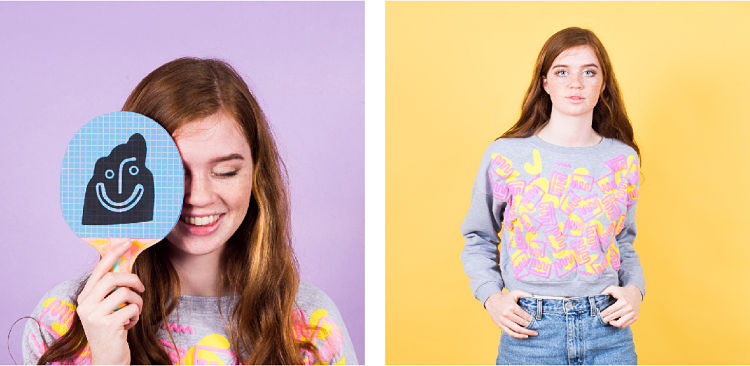
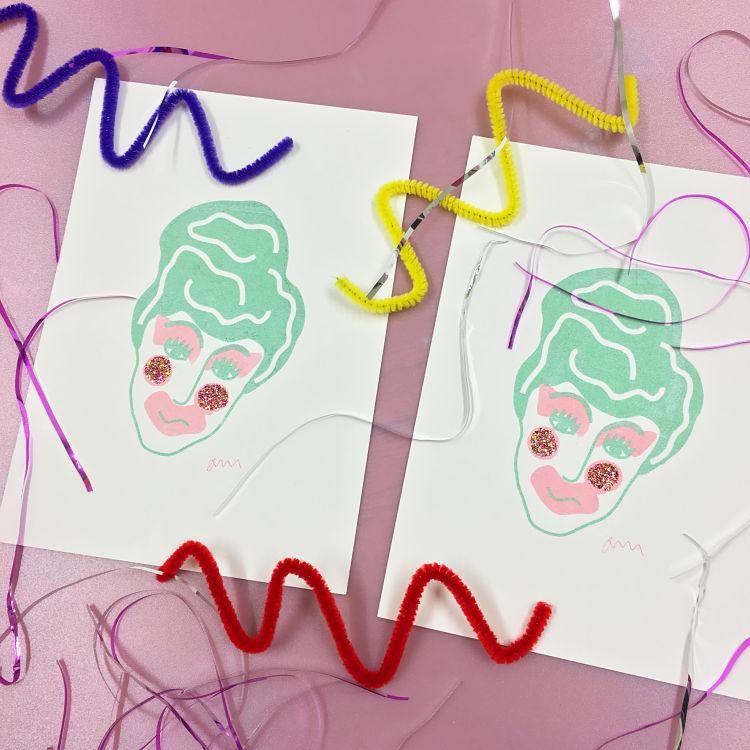 Since graduating in 2012 with a degree in printed textiles, Freya has worked with a variety of clients including Action on Hearing Loss, Open Culture Liverpool, Coppafeel and Sink the Pink. She also delivers a variety of creative workshops for clients including Plymouth College of Art, Ocean Studios and Drake Circus. Freya works using a variety of mediums including screen printing, riso printing, and vinyl often combining processes to create innovative and playful pieces.
Since graduating in 2012 with a degree in printed textiles, Freya has worked with a variety of clients including Action on Hearing Loss, Open Culture Liverpool, Coppafeel and Sink the Pink. She also delivers a variety of creative workshops for clients including Plymouth College of Art, Ocean Studios and Drake Circus. Freya works using a variety of mediums including screen printing, riso printing, and vinyl often combining processes to create innovative and playful pieces.
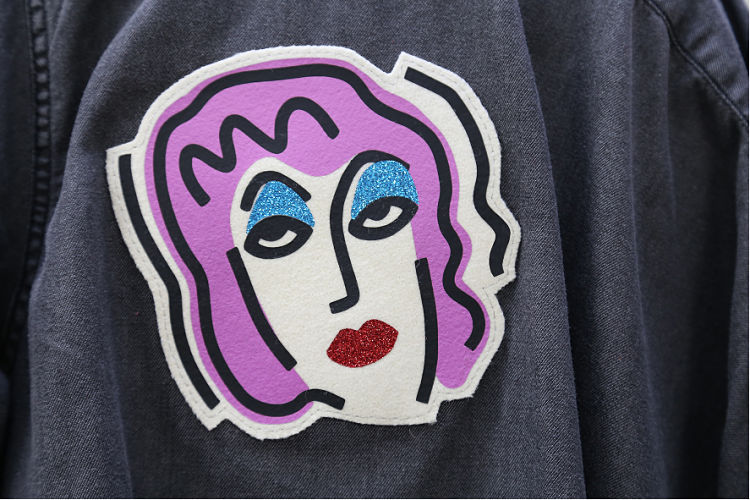


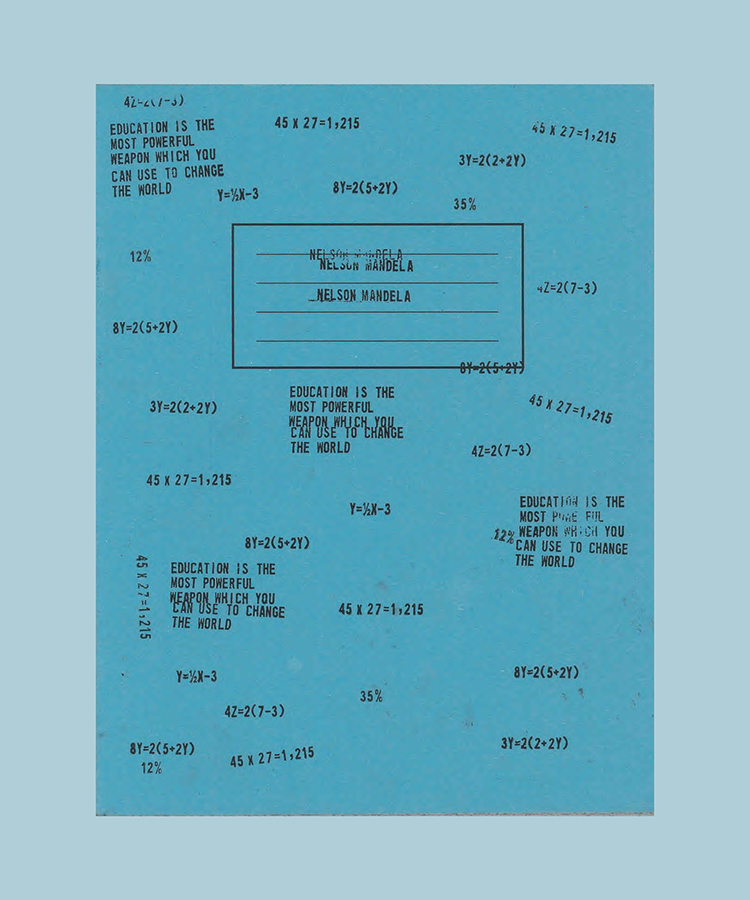 Her designs are inspired by social issues prevalent in society today, and she seeks to use her work as a platform to raise awareness to these issues.
Her designs are inspired by social issues prevalent in society today, and she seeks to use her work as a platform to raise awareness to these issues.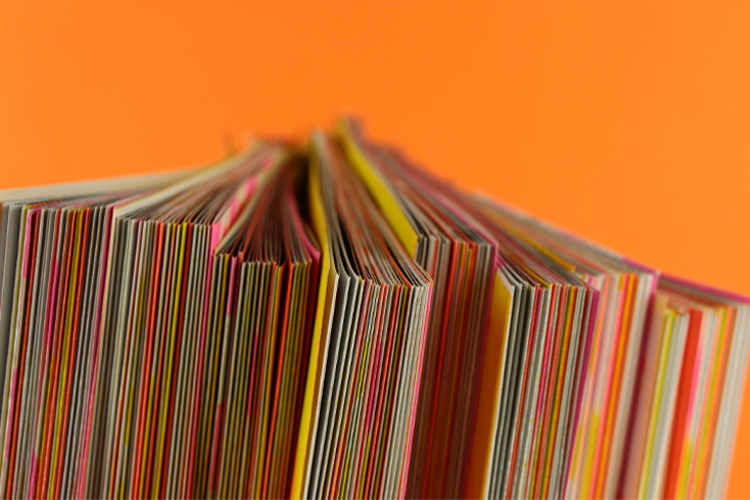
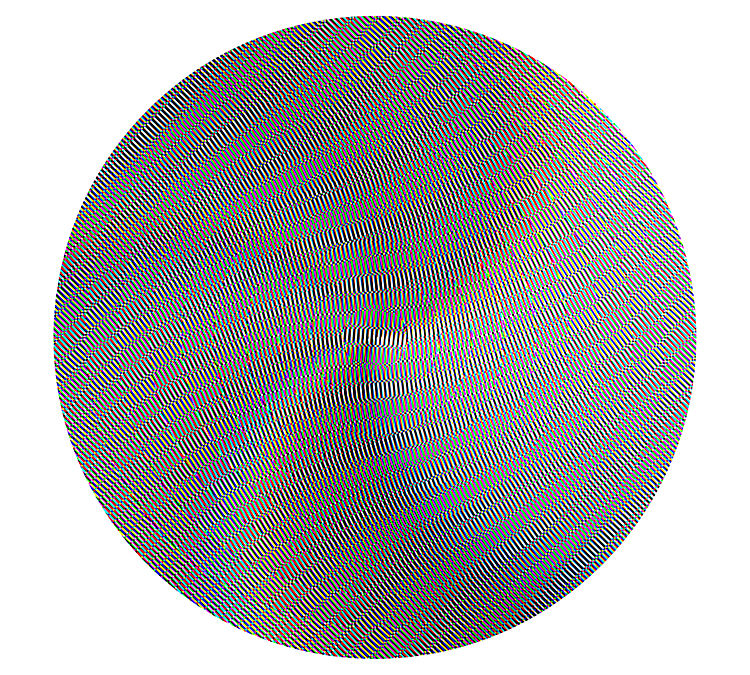

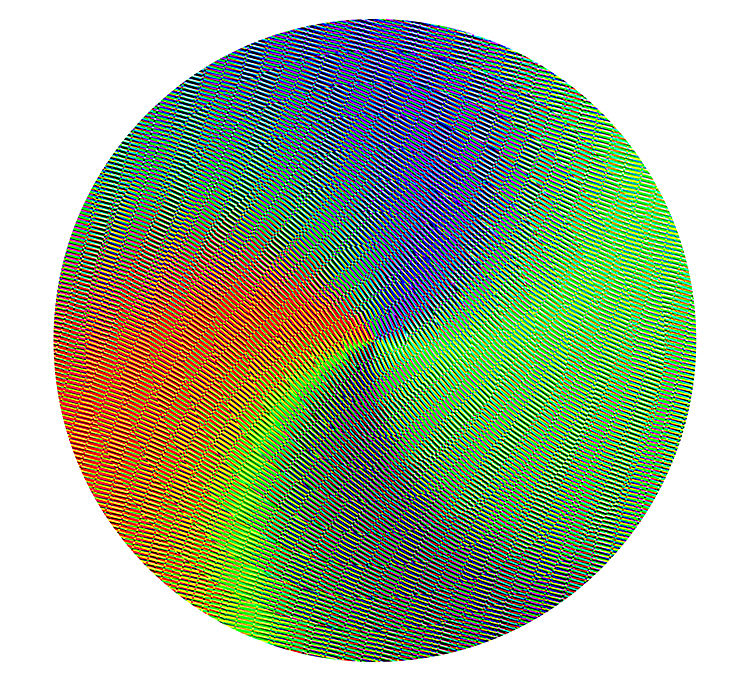
















 As a sufferer of chronic anxiety, Chadwick uses her image making as a tool to manage her mental health. “It’s kind of a curse and blessing,” she says. “I have to create something, at least one thing a day. Creating helps with the anxiety that I experience day to day, so I guess you could say, the more anxious I feel, the more I create!” The
As a sufferer of chronic anxiety, Chadwick uses her image making as a tool to manage her mental health. “It’s kind of a curse and blessing,” she says. “I have to create something, at least one thing a day. Creating helps with the anxiety that I experience day to day, so I guess you could say, the more anxious I feel, the more I create!” The 
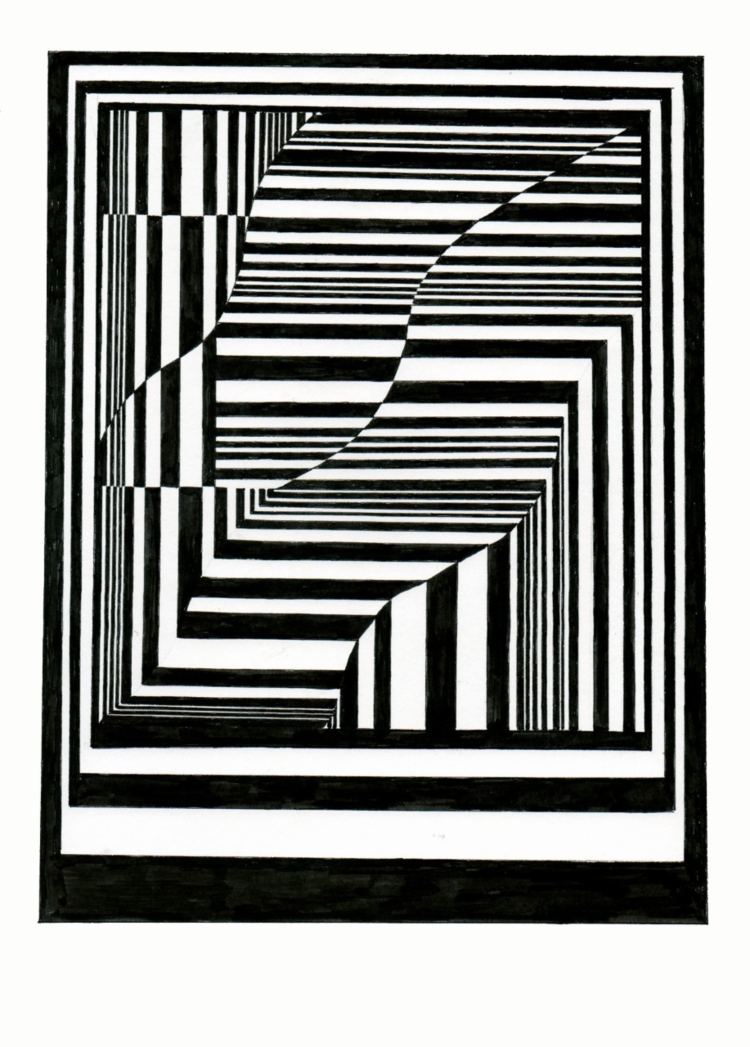 Since graduating from Falmouth University with a BA in Illustration, Sleep Sparrow’s work has been featured by the likes of VICE and Crack Magazine. She has been short-listed for the People of Print Graduate Competition (2015), and the Top 10 The London Coffee Art Project (2014). Currently residing in her hometown of Birmingham, Chadwick works in Cass Art supplies shop where she was awarded the Staff Bursary (2018). Endeavoring to support the small but thriving community of creatives in the West Midlands, her prints have been exhibited in bohemian hotspot The Night Owl as well as by a local brewery on a limited edition “Pink Champagne” ale. Although upcoming projects reach further afield: “One of my collages is scheduled to pop up in a popular Netflix series, due to air in 2019! Keep your eye balls peeled!”
Since graduating from Falmouth University with a BA in Illustration, Sleep Sparrow’s work has been featured by the likes of VICE and Crack Magazine. She has been short-listed for the People of Print Graduate Competition (2015), and the Top 10 The London Coffee Art Project (2014). Currently residing in her hometown of Birmingham, Chadwick works in Cass Art supplies shop where she was awarded the Staff Bursary (2018). Endeavoring to support the small but thriving community of creatives in the West Midlands, her prints have been exhibited in bohemian hotspot The Night Owl as well as by a local brewery on a limited edition “Pink Champagne” ale. Although upcoming projects reach further afield: “One of my collages is scheduled to pop up in a popular Netflix series, due to air in 2019! Keep your eye balls peeled!”
 RSS Feed
RSS Feed
